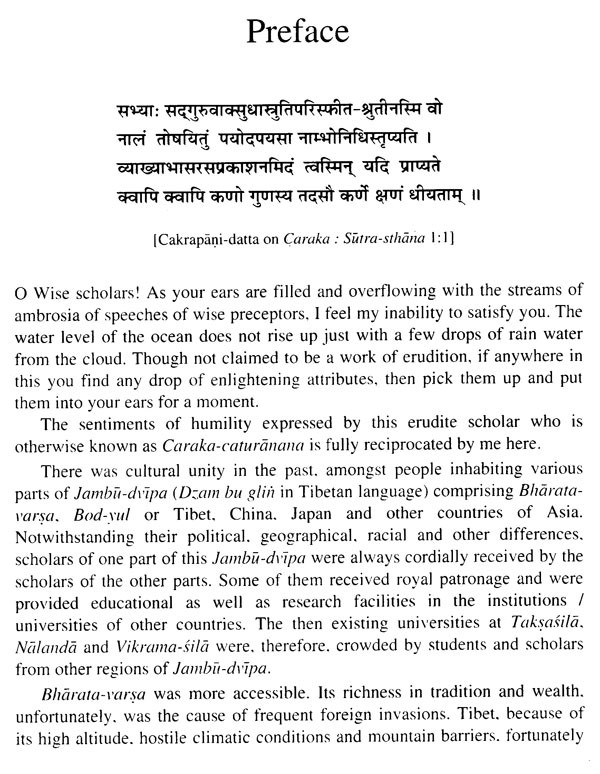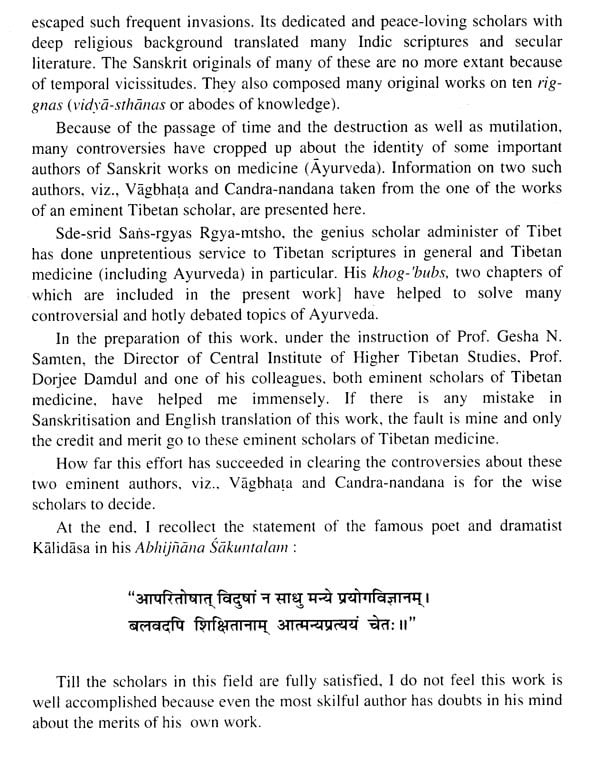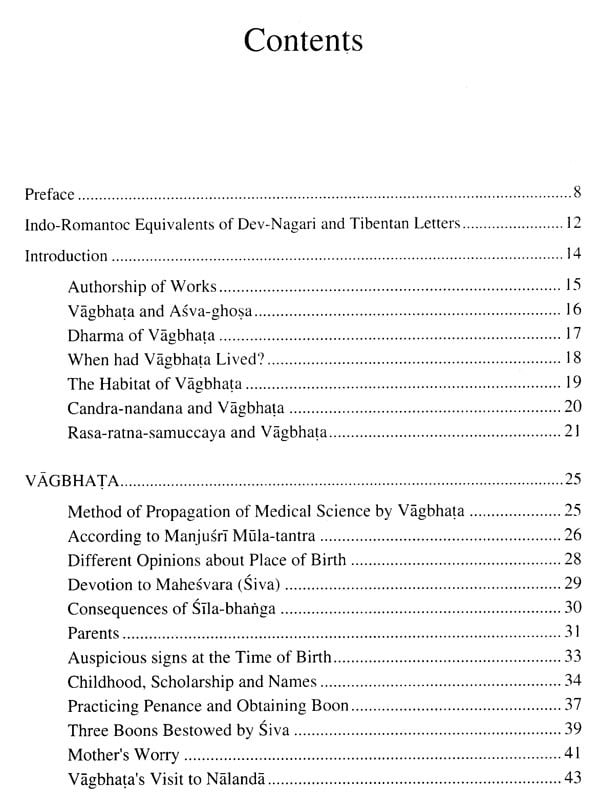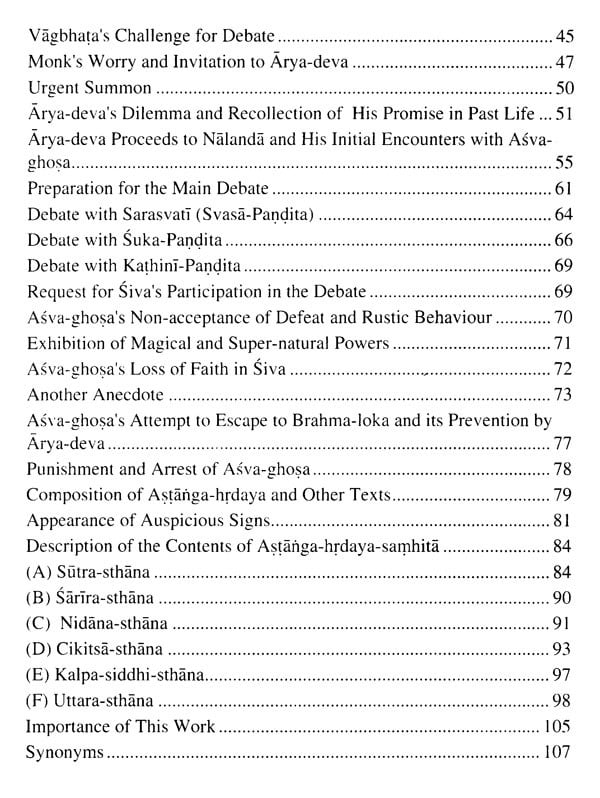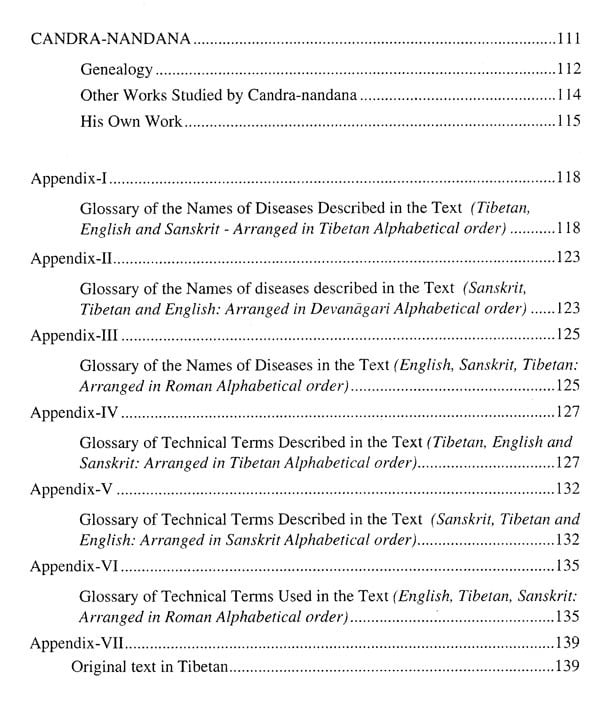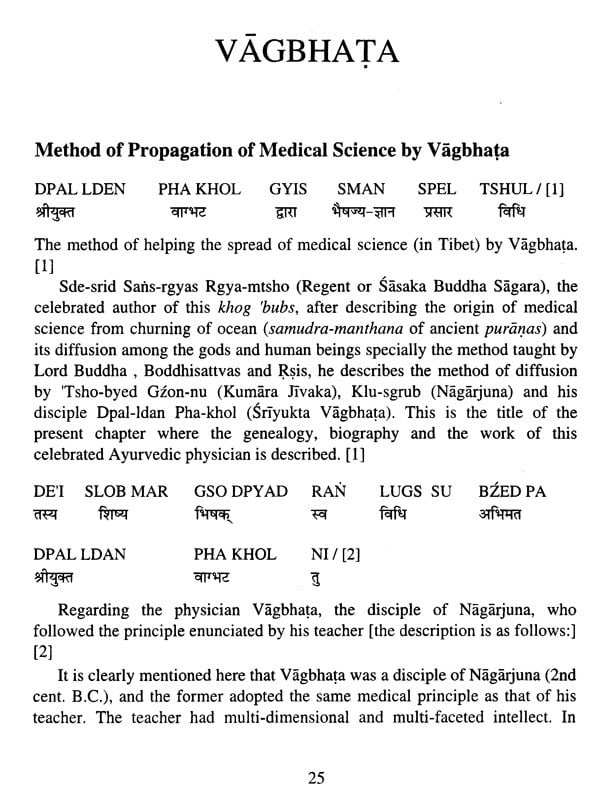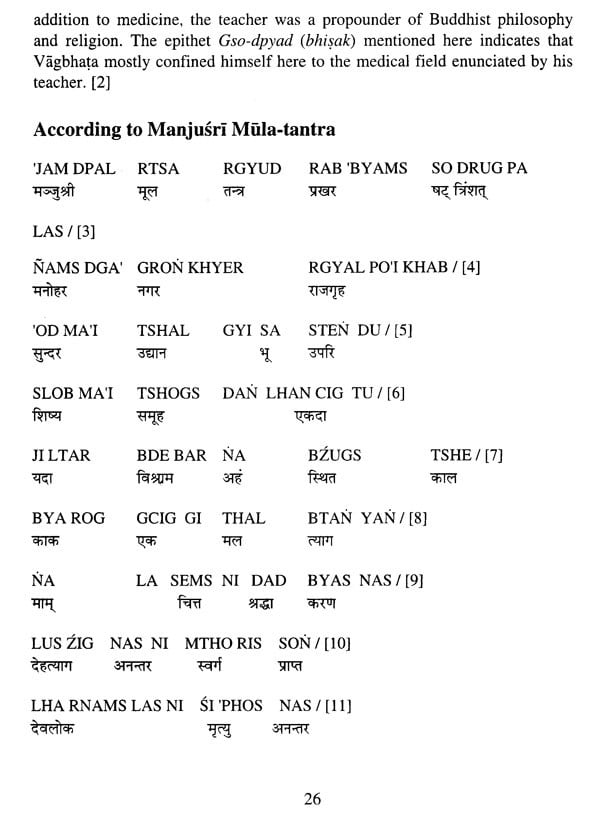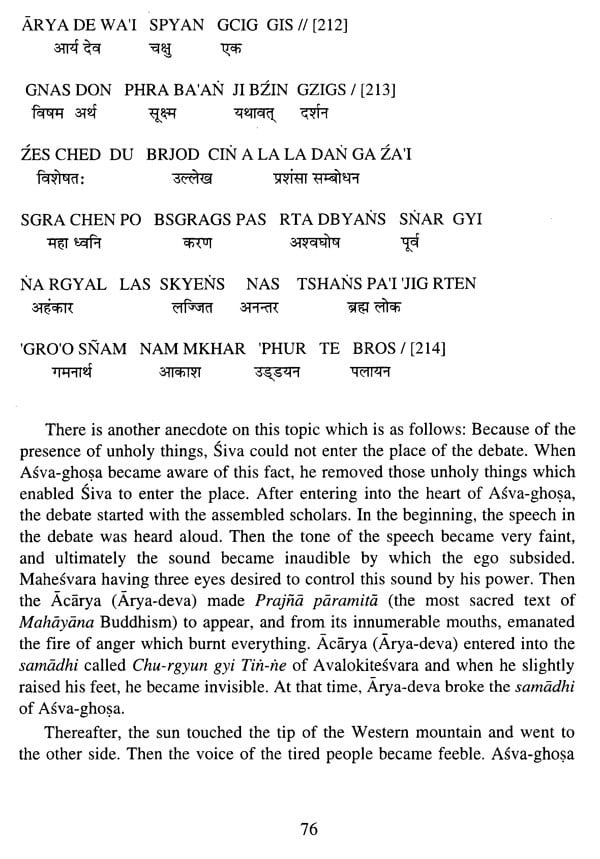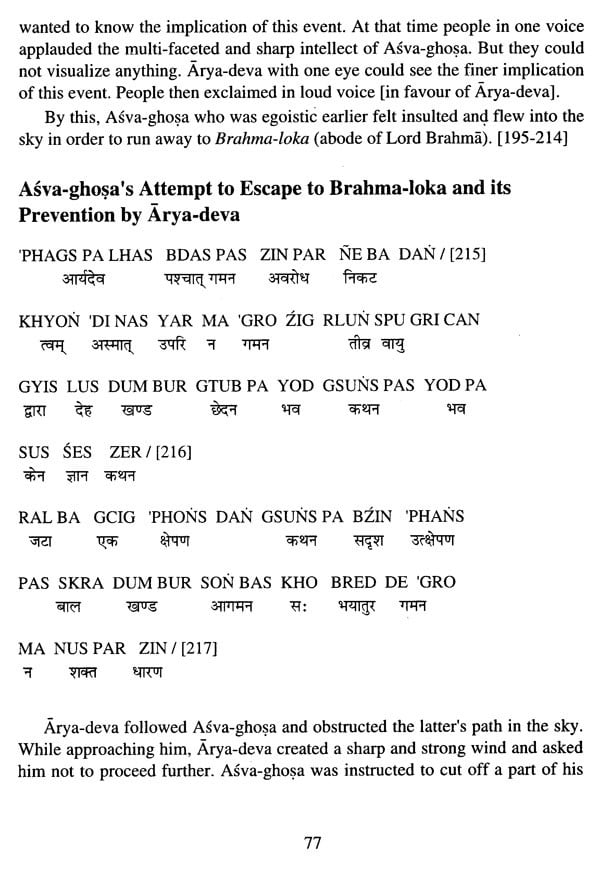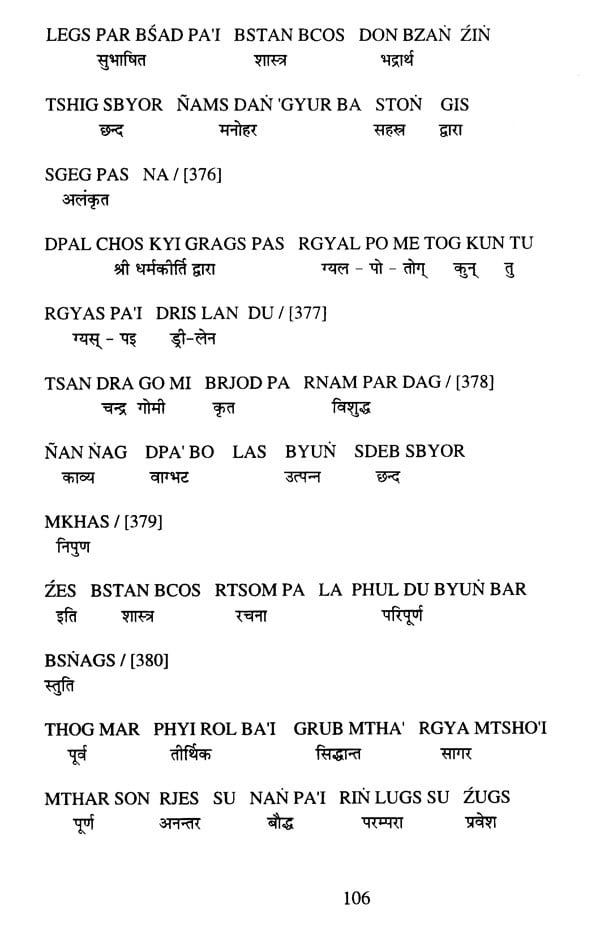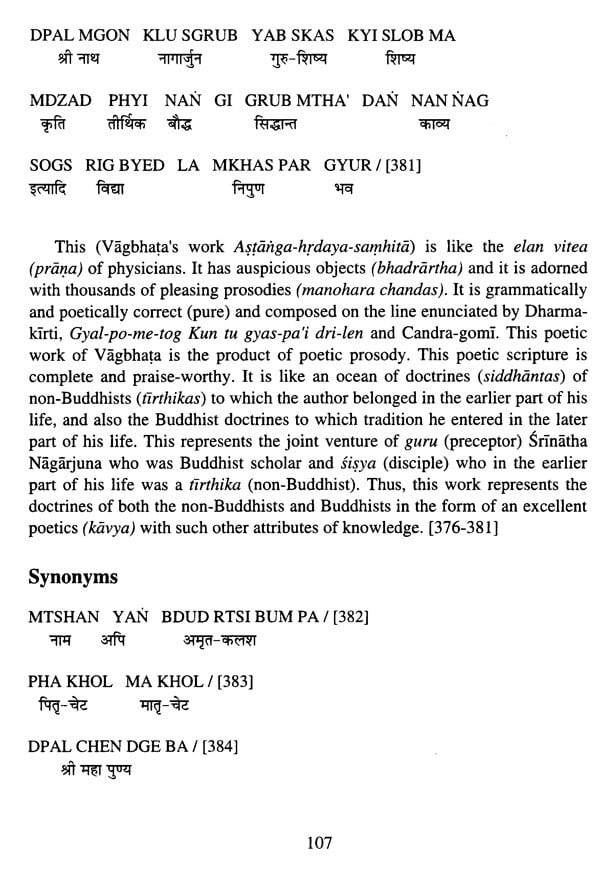
Vagbhata and Candra-Nandana in Indo-Tibetan Medicine- Traditions, Concepts and Practice in Tibetan Medicine and Ayurveda
Book Specification
| Item Code: | NBZ499 |
| Author: | Vaidya Bhagwan Das |
| Publisher: | Hind Pocket Books |
| Language: | Hindi and English |
| Edition: | 2013 |
| ISBN: | 9788121618687 |
| Pages: | 160 |
| Cover: | PAPERBACK |
| Other Details | 9.50 X 7.50 inch |
| Weight | 340 gm |
Book Description
Vagbhata, an eminent scholar and physician of ayurveda whose works are popular even now amongst ayurvedic physician of India and abroad, is unfortunately shrouded with controversies regarding his genealogy, time, habitation, religious faith and the works he composed.
Because of temporal vecissitudes, the sectarian quarrel was at its apogee in the medieval period, and Vagbhata who was a follower of Shaivism was later converted to Buddhism. His Pre-Buddhist name was Asvaghosa and had composed many works like Buddha-carita of great poetic merit. His poetic excellence is reflected in his compositions of the Astanga-hrdaya.
The present book based on the work of this eminent scholar of Tibet, solves many of these riddles.
Vaidya Bhagwan Dash has had an outstanding brilliant academic career. In addition to post-graduate qualification in Ayurveda, he holds a Master's degree in Sanskrit and a Doctorate from the University of Delhi. In the course of over forty years dedicated to research and practice of Ayurveda. Dr. Dash has attended several international conferences and seminars held in Brazil, Mexico, Italy and France and has written over thirty eight important publications covering different aspects of Ayurveda and Tibetan Medicines.
Sde-srid Sans-rgyas Rgya-mtsho (1620-1705 A.D.), the illustrious son of Tibet with multi-faceted and multi-dimensional intellect, was a disciple of the 5th Dalai Lama Ngawang Lobzan Rgymtso (1617-1682 A.D.) and recognising his genius, the mentor elevated him (C 1649) to the position of Advisor in secular as well as spiritual matters. From 1679 he became the Regent of Lhasa, and -continued thereafter, during the period of the 6th Dalai Lama. He had exceptional knowledge of medical literature and was encouraged to pursue his endeavour _ his mentor. His scholarly commentary called Baidurya Snon-po (Nila-vaidurya) by sorting out the minor differences in interpretation of Rgyud-bzi, between the two traditions, viz., Yan-lug and Zur-lug is considered to be the, most authentic. It is an elaborate and enlightening commentary on Rgyud-bzi which is equally valuable for the physicians of Tibetan medicine and Ayurveda.
His magnum opus, depicting various concepts of Tibetan medicine (Ayurveda) in paintings, is equally important to the doctors of Tibet and India for proper understanding of the medical systems of both Tibet and India. In his Khog-'bubs (antaraveksana or introspection) on the origin (mythological) of medicine, its development in Phag-yul or Area-desa (Bharata-varsa) through Kumara-Jivaka (Tsho-byed Gson-nu), Nagarjuna (Klu-sgrub), Vagbhata (Pha-khol), Candra-nandana (ZIa-ba Mnon-dga') etc., and thereafter its spread in Bod-yul (Tibet) in the forms of different traditions are elaborated.
In the present work, only the contributions of Vagbhata and Candra-nandana are taken into account. Sans-rgyas Rgya-mtsho has compiled information from different authentic sources. In the books, articles and Introductions to the works of Vagbhata, by the present day scholars and historians, both Indians and outsiders, there are many intellectual acrobatics about this author. These are solved by the information provided in Sde-srid Sans-rgyas Rgya-rntsho's work.
Vagbhata is one of senior-triad (Brhattrayi), the other two works being Caraka-samhita and Susruta-samhita. Because of very ancient origin as well as temporal vicissitude, both Caraka and Susruta have undergone many changes in the form of redactions, interpolations and supplementations. Vagbhata, being a more recent work, has suffered less. Though Vagbhata unsuccessfully attempted to systematize the medical topics, for his efforts to collect information from agamas (authoritative earlier composed works on Ayurveda) which are lost in original forms, and for his poetic as well as cryptic presentations for memorization, his work is respected and followed by the present-day Ayurvedic physicians in India with great admiration. His work was translated into Tibetan language by Rin-chen Bzan-po (Ratna-bhadra [958-1055 A.D.] in Sanskrit) and the translated work along with many others of authors like Nagarjuna, the great Buddhist philosopher of second century BC, formed a part of Tanjur scriptures of Mahayana Buddhism. Subsequently, many controversies have crept into the career of this great Buddhist scholar-physician.
Authorship of Works
At present two important Ayurvedic works in Sanskrit, namely Astanga-sangraha and Astanga-hrdaya, are available. The former is larger in size and composed in both verse and prose, whereas the latter is exclusively in metrical verse forms. Though the colophons and internal evidence in these two works give clear indication that they were both composed by the same author, the contents being slightly different, some of the later commentators, while quoting from these works, have designated the former as Vrddha Vagbhata and the latter as Laghu Vagbhata or simply Vagbhata. This has created great deal of controversy and confusion among the present-day Ayurvedic physicians of India as well as the medical historians of abroad, so as to treat them as different and designate them Vagbhata-I and Vagbhata-II. To justify their views, they have advanced arguments in favour of, or against, the one or the other notwithstanding the clear opinion of some commentators that the author of both the works is the same Vagbhata. Some of these modern scholars have even created a third author called Madhya Vagbhata.
In this work, Sans-rgya Rgya-mtsho has made it very clear (ref. line nos. 223-226) that this author Vagbhata had composed four different works on Ayurveda including his auto-commentary called Vaiduryaka-bhasya which is available only in Tibetan translation and is included in Tanjur scriptures. The original Sanskrit commentary, like many others, is no more extant.
Rasa Vagbhata or the fourth Vagbhata, the author of an important work on Rasa-sastra named as Rasa-ratna-samuccaya, will be discussed later.
There was a tradition in the past for the same author to compose his works in expanded, less and much less expanded forms. For example, Nagesa (Nagoji) Bhatta in order to explain the philosophy of grammar to students of different intellectual levels had himself composed three different works, viz., (1) Brhat Siddhanta Manjusa, (2) Laghu Manjusa, and (3) Parama Laghu Manjusa, and also (1) Brhat Sabdendu Sekhara, and (2) Laghu Sabdendu ,Sekhara. Varaha-mihira had also composed Brhat Jataka and Laghu Jataka. The tradition in Bharata-varsa is replete with such references. Therefore, Sde-srid Sans-rgyas Rgya-mtsho's observation that the same author Vagbhata has composed these works and the auto commentary on Astanga-hrdaya is in conformity with the tradition of this Arya-desa.
**Contents and Sample Pages**
